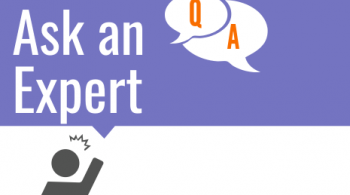By Lisa Carey, M.A.
May 17, 2016
Imagine this scene: it is the first day of 6th grade, and students have just been handed their new locker combinations and schedules and have shuffled down the hallway to attempt to open their lockers for the first time. Many of the students can’t open the locks; they didn’t understand the verbal directions, and they can’t figure out how to read the small card with the combination printed on it. They feel lost. They feel underprepared. They feel unsupported. Several of them cry. But, a student leader emerges and offers to help the other students. He shows them how to open the difficult lockers, how to turn the lock to the right and then the left. He directs them to their next class. He calms their fears.
Several years ago, after a transition from teaching high school to middle school, I watched this scene unfold. If anything could affirm my belief that ability and disability are highly contextual in nature, it would be this experience. The hero in this scenario was a 6th grade boy with an intellectual disability. The floundering and despairing students were his non-disabled peers. What made this student so capable of coming to his classmates’ rescue? Scaffolding.
Recognizing that transitions are often difficult for students with disabilities, I had invited many of the students on my caseload to visit school prior to the first day. They met their teachers, visited their new classrooms, and practiced with their lockers. Prior to the first day, these students were confident and capable. They sailed through the first days of school, establishing themselves as proficient and valuable members of their school community. More importantly, they taught me and my fellow teachers an invaluable lesson: with the right supports in place, students facing significant barriers to learning can become confident, expert learners.
I was beyond fortunate to co-teach with some amazing general education teachers who were always willing to change their instructional practices. From adapting to co-teaching, to incorporating Universal Design for Learning (UDL) practices, these teachers took on the task of making sure inclusion worked for everyone. Were we perfect? Of course not! Did we support each other and ultimately help students with intellectual disabilities have a successful first year of middle school? Absolutely! While I knew anecdotally why we were able to do this, I later encountered research that demonstrates how we hit on so many of the key elements for successful inclusion of students with disabilities:
1. Teacher Self-Efficacy and Attitudes Toward Teaching Students with Disabilities
Teacher self-efficacy (or a self-belief in one’s ability to successfully teach) and attitudes toward teaching students with disabilities are highly correlated (Abbotsford, 2014). If a teacher is confident in her ability to teach students with disabilities, she is also very likely to have a positive attitude about having students with disabilities in her classroom. Low self-efficacy and negative attitudes toward students with disabilities and inclusion set up a barrier to learning new instructional skills and a willingness to make changes to instructional practice (Abbotsford, 2014; Dawson & Scott, 2013). In positive 6th grade inclusion experiences, my co-teachers continually increased both their self-efficacy and their attitudes toward teaching students with disabilities in the inclusion setting. At times, I did feel like I had to be the team cheerleader, but as our students met with success, I played this role less frequently.
2. Collaboration
Supporting students with intellectual disabilities in the inclusion setting requires a lot of collaboration. The general education teacher needs to work with the special education teacher, and both teachers need to work with para-educators and other service providers, such as speech and language pathologists and occupational therapists. The team needs to figure out how to work together and how to accomplish each person’s role while collaborating toward a common goal. The ability for teachers to collaborate with the team impacts their self-efficacy and attitudes (negative experiences can decrease self-efficacy and sour attitudes; Abbotsford, 2014). In my experience, our 6th grade team had a common planning time, which was a huge boon to our efforts. We also shared our resources and created lesson plans digitally to increase our time for collaboration. Additionally, we found ways to collectively collaborate with our student’s parents.
3. Knowledge and Skills
Telling a novice to perform an advanced skill without teaching them first would be absurd; yet, we frequently place this demand on teachers (Abbotsford, 2014; Berry, 2010). How can teachers support students with disabilities if they haven’t been trained to do so? Through collaboration, my teammates and I were able to support each other to acquire new knowledge and skills. Thanks to a heavy dose of prior training in UDL, I knew how to make materials, learning, and assessments accessible for the wide variety of students in our inclusion classrooms, and I shared this knowledge with my co-teachers. (There’s that collaboration piece again!) In turn, my co-teachers made sure I was proficient with the curriculum (see Confessions of a Math Phobic Teacher to read more about my experience). As the year progressed, we all became much more knowledgeable and skilled in supporting rigorous learning for all students through flexible means.
I have seen students with intellectual disabilities thrive in the inclusion setting. This is not to say that students cannot thrive in other settings as well, but that inclusion should never be ruled out due to a diagnosis alone. Before an inclusion program can be successful, however, considerations must be made for how the school team will build teacher self-efficacy, address teacher attitudes, provide supports for collaboration, and help teachers gain new knowledge and skills. I thought that supporting the inclusion of students with intellectual disabilities would be the ultimate test of my knowledge of UDL and my co-teaching skills. I was wrong - it wasn’t a test. It was one of the greatest learning experiences of my teaching career.
References:
- Abbotsford, A. M. (2014). Teachers’ self-efficacy, sentiments, attitudes, and concerns about the inclusion of students with developmental disabilities. Exceptionality Education International, 24(1), 18–32.
- Berry, R.A. ( 2010). Pre-service and early career teachers attitudes toward inclusion, instructional accommodations, and fairness: Three profiles. The Teacher Educator, 45, 75-95. doi:10.1080/08878731003623677
- CAST (2011). Universal design for learning guidelines version 2.0. Wakefield, MA.
- Dawson, H., & Scott, L. (2013). Teaching students with disabilities efficacy scale: Development and validation. Inclusion, 1(3), 181–196. doi:10.1352/2326-6988-1.3.181















